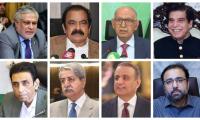Pakistan is one of the youngest countries in the world. At least 62 per cent of its population is below the age of 35. To convert this population bulge into productive citizens and an effective workforce, PPP Chairperson Bilawal Bhutto-Zardari routinely talks about engaging them with some solid plans. He is 35 years old and is the youngest leader to head any mainstream party in today’s Pakistan. His words become more relevant due to his age.
He unveiled one such flagship plan before the February 8 elections, as part of his election manifesto titled ‘Chuno Nai Soch Ko’, with the youth card at the top. He envisioned the youth card along the lines of the Benazir Income Support Programme (BISP), which has proven a true national programme to support the incomes of poor and marginalized women in Pakistan.
The youth card, according to him, would be a tool to extend financial support to young people so that they can work on their skill development and employability on competitive grounds. Young people need jobs, and we do not have enough jobs in the public sector. Connecting them with the private sector is a lasting and sustainable solution. At present, a majority of young people struggle to get into the private sector because they do not have the skills the corporate world needs.
As per specific details, the youth card will provide a one-year stipend for educated, deserving young women and men to transition to work; student loan opportunities for higher education; link-up with internships and training opportunities in the public and private sectors; and opportunities for youth-led startups in all sectors by providing the required IT infrastructure to guarantee high-speed connectivity across the country.
For this, the first step is to set up youth centres across the country, providing access to libraries and digital libraries with free Wi-Fi; sports, culture, and recreational facilities; vocational training; skill and language development classes; and career and employment facilitation services.
It is now the time to implement what he has promised to the youth of Pakistan. The PPP has governments in two provinces – Sindh and Balochistan (it is part of the coalition setup), where Bilawal can easily implement his promised electoral agenda into action by effectively engaging the youth, as the upcoming provincial budgets may announce their respective plans next month.
There are some youth-centred programme establishments which are already being run by the Sindh government or through its support in the province. One is the Benazir Bhutto Shaheed Human Resource Research and Development Board (BBSHRRDB). It is a mega initiative of the Sindh government, which is aimed at developing human resources in Sindh by empowering young people (aged between 18 and 35 years) with employable skill sets that will multiply work avenues for them. Another one is the Sindh Board of Technical Education (SBTE) for training and equipping them with technical know-how and skills by offering diplomas in different areas from commerce to aviation. There are almost 40 government and private institutes of business and commercial education in Sindh which are registered and affiliated with the SBTE.
The third successful initiative is by SZABIST, which has established the Directorate of SZABIST ZABTech (iTVE). It has been dealing with technical and vocational education since 2000 and has a grassroots-level connection with people from at least 13 districts of Sindh.
On top of it, there is an apex body of the Sindh Technical Education and Vocational Training Authority (STEVTA) that also offers courses and diplomas to young people in the province from banking and insurance to salesmanship, automobiles and biomedical.
These initiatives and bodies must align with their one-window operations at district-level youth centres. Other provincial governments could follow this model of Sindh under the patronage of the youth development department at the provincial level. Such programmes can be expanded at the national level through the coordination of the federal government and donor agencies and can go a long way in engaging and imparting necessary skills to the youth of Pakistan.
The writer is an anthropologist based in Karachi. He can be reached at:
sikandarhullio@yahoo.com
There are over 11 million Pakistanis settled abroad, out of which around six million work in Gulf and Middle East
This year alone, US Treasury would have to roll-over $10 to $14 trillion in maturing short-term debt
Tear gas no longer marks just protest sites; it paints entire cities as battlegrounds but then again, PTI did it first
Political structures and governance systems have been central to economic and social development
It is confirmed now 40 Pakistanis had died after boat of migrants had capsized in sea near Greece
Many people believe that in future, AI will play an even more significant role in their lives







